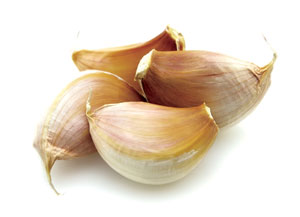Dr. Hannah Evergreen talks Lymphedema, drooling and bug bites with EW readers to help shed some light on some common equine problems.
Q: I have a Clydesdale with what I think may be Chronic Progressive Lymphedema on his right fore and hind legs, below the knee and hock. There are cauliflower-like growths that have got bigger and bleed easily. His legs are swollen and ooze smelly yellow fluid. His left legs are perfectly fine. I have not been able to get much treatment advice from my vet, other than to use long term antibiotics and steroids. Other than his right legs, he is in beautiful health, muscular, glossy and strong. He is not even unsound. Is there anything I can do to help balance his body naturally?
A: The lower leg thickening, swelling and growth formation you are describing does sound like Chronic Progressive Lymphedema. This is a genetically linked condition common in draft breeds. As the name suggests, it’s a chronic (or long term) condition that progresses (or worsens) with time. It is caused by a combination of malfunctioning lymphatics and a compromised immune system.
This condition does not resolve completely, so treatment options are aimed at managing it. Even though it is currently affecting only your Clydesdale’s right legs, his left legs should be treated as well for prevention. Systemic (oral or injectable) antibiotics and steroids can be very helpful short term but if used long term have many negative side effects. I recommend their use only in times of flare-up (when you are trying to get the condition back under control) because the benefits outweigh the risks in these cases.
Topical antibiotic and steroid treatments are much safer than the systemic forms as they are locally absorbed rather than affecting the whole body. Animax is a helpful topical antibiotic/steroid ointment when needed. If topical use yields adequate results, you can avoid systemic antibiotics and steroids altogether. It is better to use topical antibiotics and steroids consistently than use oral antibiotics intermittently.
More natural management options can be used along with Western medicine during flare-ups, or on their own once the condition is under control (little to no pus or foul-smelling exudate, pain, or swelling).
- Immune system support: This is key. Echinacea, garlic, and vitamin C are helpful.

- Antibacterial treatment: Tea tree oil products can be used around lesions but may cause irritation on open lesions (“grapes”). Sore No More’s “The Sauce” can be used all over for daily to weekly medicated baths. This product contains a betadine based disinfectant along with herbs such as arnica and witch hazel. The homeopathics Thuja and Graphite are helpful as well.
- Circulatory and systemic support: Support wraps on the lower legs (12 hours on and 12 hours off) can help promote healthy circulation. Consistent exercise and movement (e.g. not stalling the horse) also helps. Acupuncture can increase bloodflow and decrease discomfort from swelling/infection. For tough/non-responsive cases, try Natural Cellular Defense or Vivo Natural’s Zeolite supplement for detoxification.
- Skin support: Ground flax seed is high in Omega-3 fatty acids. MSM supplementation can be useful for healthy skin and connective tissue.
To prevent Chronic Progressive Lymphedema, keep all four lower legs clipped and dry. Be sure to maintain clean, mud-free paddocks at all times. Bathe all four legs weekly in a medicated shampoo, then dry completely with a clean towel or hair dryer. Make sure the bedding is fresh and free from mites. If mites are a concern, Frontline (cat and dog flea medication) can be used; for a more natural approach, bathe with a sulfur based product such as Shapley’s MTG, weekly or as needed. Regular veterinary exams are important to ensure you are on the right track with your treatment plan.
Q: My new horse drools more than I am used to seeing in other horses, both at work and at rest. Standing in the crossties he creates a small puddle beneath him as he drips saliva and blows little bubbles. His lower lip is also typically droopy. Should I be concerned?
A: I have seen the occasional normal healthy horse that seems to drool more than others, but in most cases, excessive salivation and drooling is a sign of a problem. Treatment depends on what that problem is. I would start with a veterinary exam, including a dental exam and checking the salivary glands for injury. Most horses should be floated at least once a year so be sure to ask the previous owner what your new horse’s dental history is. Dental pathology (such as sharp points, loose or broken teeth), foreign objects such as a stick stuck on the roof of the mouth, fractures, mucosal ulceration or irritation, masses and wounds should all be ruled out.
Some plants can cause excessive salivation. They include red clover contaminated with the fungus Rhizoctonia leguminocola, which contains slaframine, a toxin causing excessive salivation. This fungus can contaminate hay so be sure to check your pasture and hay. Simply removing access to the toxin resolves the problem in these cases.
Q: About a month ago, my mare developed a large abscess on her shoulder from a bug bite. A few days ago she developed another abscess on the same shoulder, this time from a small horizontal cut on her shoulder. Each time her shoulder has swelled so badly that she drags her leg, and the vet has had to lance and drain it. I have been excellent about keeping it clean. I am curious as to why she might develop an abscess twice on the same shoulder, and why she might be reacting so badly to small things like bug bites and small cuts. Is there anything I can do to boost her immune system? She is currently on 24/7 turnout with good hay and pasture, and gets a small amount of grain with a vitamin/mineral supplement, flax, and BO SS.
A: The actual cause of the abscess may not be the bug bite or small cut. These things typically cause swelling but not infections such as abscesses. Could the “bug bite” have been an entry hole for a small puncture wound? Or was the small cut secondary to itchiness because of foreign material festering under the skin? The abscess tract should be surgically explored or an ultrasound performed to check for foreign material, such as part of a stick or metal wire.
There is a rare condition called pigeon fever in which a bacteria called Corynebacterium pseudotuberculosis causes recurrent abscesses and can be introduced under the skin through small wounds or bites. If the abscess comes back, be sure to have a culture and sensitivity done to see what type of bacteria are present.
A third possibility is that the abscess draining tract healed over before the abscess had completely resolved. If appropriate, a drain tube can be surgically placed in the abscess to help keep the tract open so it can heal from the inside out. The homeopathic Silicia is a good first line of defense against abscesses. Hot packing ten to 15 minutes three times a day, flushing with sterile water or dilute chlorhexidine solution, and gently expressing drainage out of the abscess every day can help get it to drain completely.
Q: My horse began getting mild nosebleeds about once a month this past summer. People have told me not to be concerned, but I am wondering why horses would get nosebleeds? I have never seen one get one before.
A: Nosebleeds (Epistaxis) can either be nothing to worry about or very serious. Some nose bleeds can be fatal, and once a serious bleed starts there is often not enough time for surgical intervention or treatment. You need to have diagnostics done to find out if your horse’s nosebleeds are serious or not. Conditions to rule out include: guttural pouch mycosis, ethmoid hematomas, sinus cysts, clotting disorders, masses, and exercise induced pulmonary hemorrhage or other respiratory conditions. Most of these can be ruled in or out by looking around the nasal passages, pharynx and guttural pouches with endoscopy. It is best to have the endoscopy done while there is active bleeding going on (it’s easier to follow the blood to the source), so make arrangements with your veterinarian or referral hospital in advance so you can get right in when it happens.
Blood work can also be done to check for clotting disorders. This is generally less expensive than endoscopy, but also less likely to give a definitive diagnosis. Once the serious conditions are ruled out by endoscopy, you can rest easy when the nosebleeds happen.
A Chinese Medicine “secret formula” you should know about is Yunnan Baiyou (or Yunnan Paiyou). It’s a powerful powder that can be blown up each nostril to help stop bleeding in an emergency situation.








